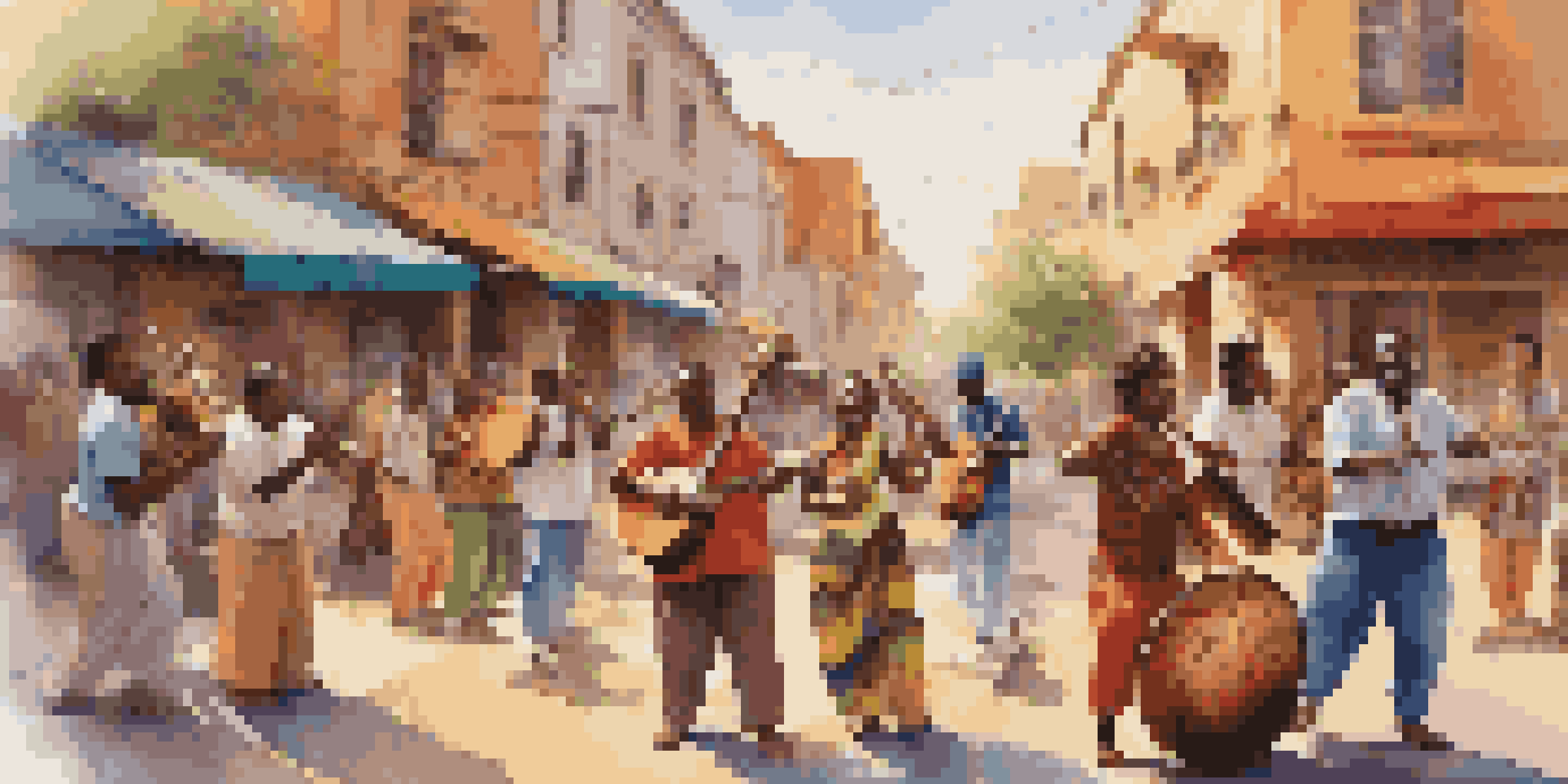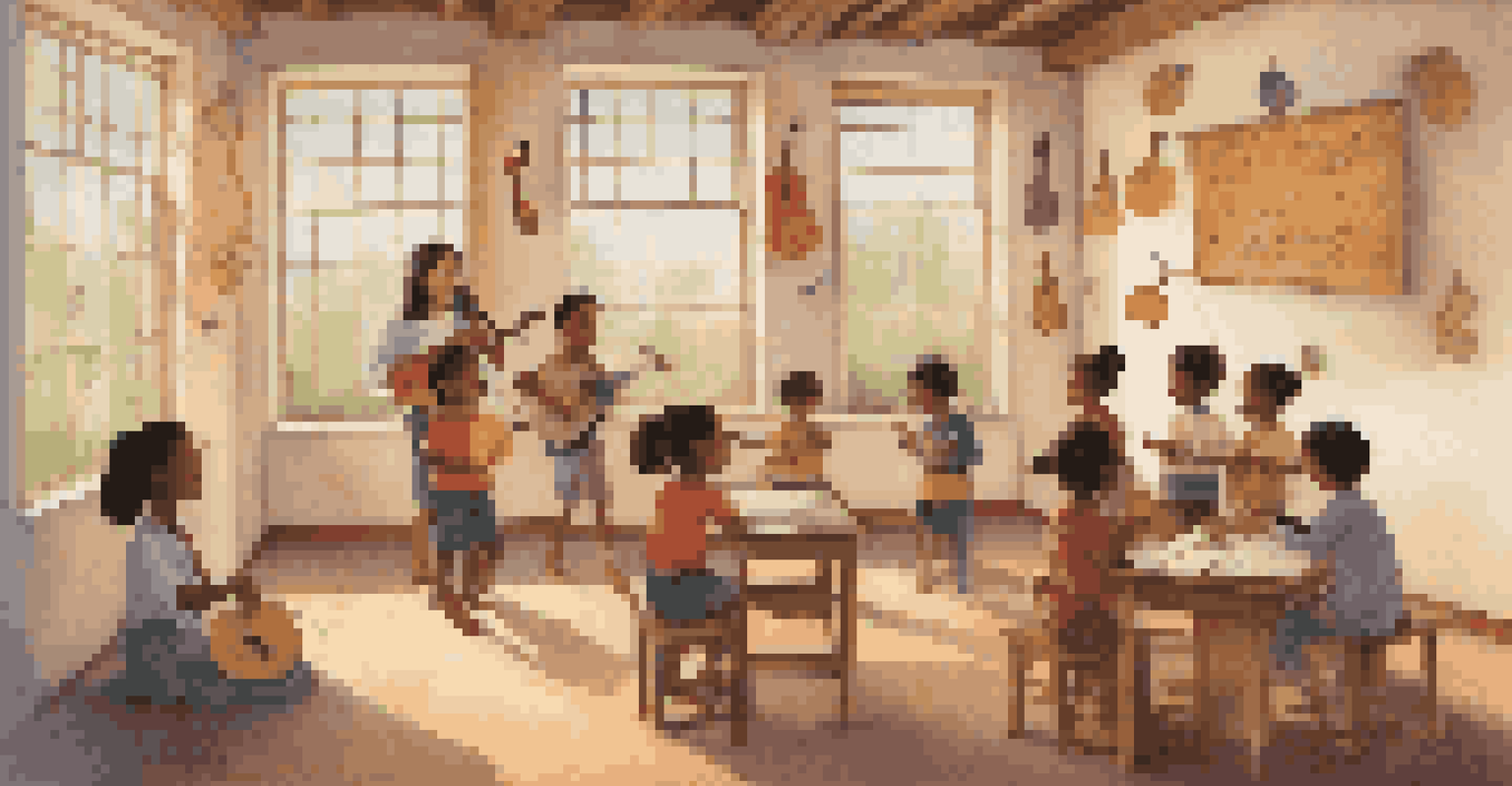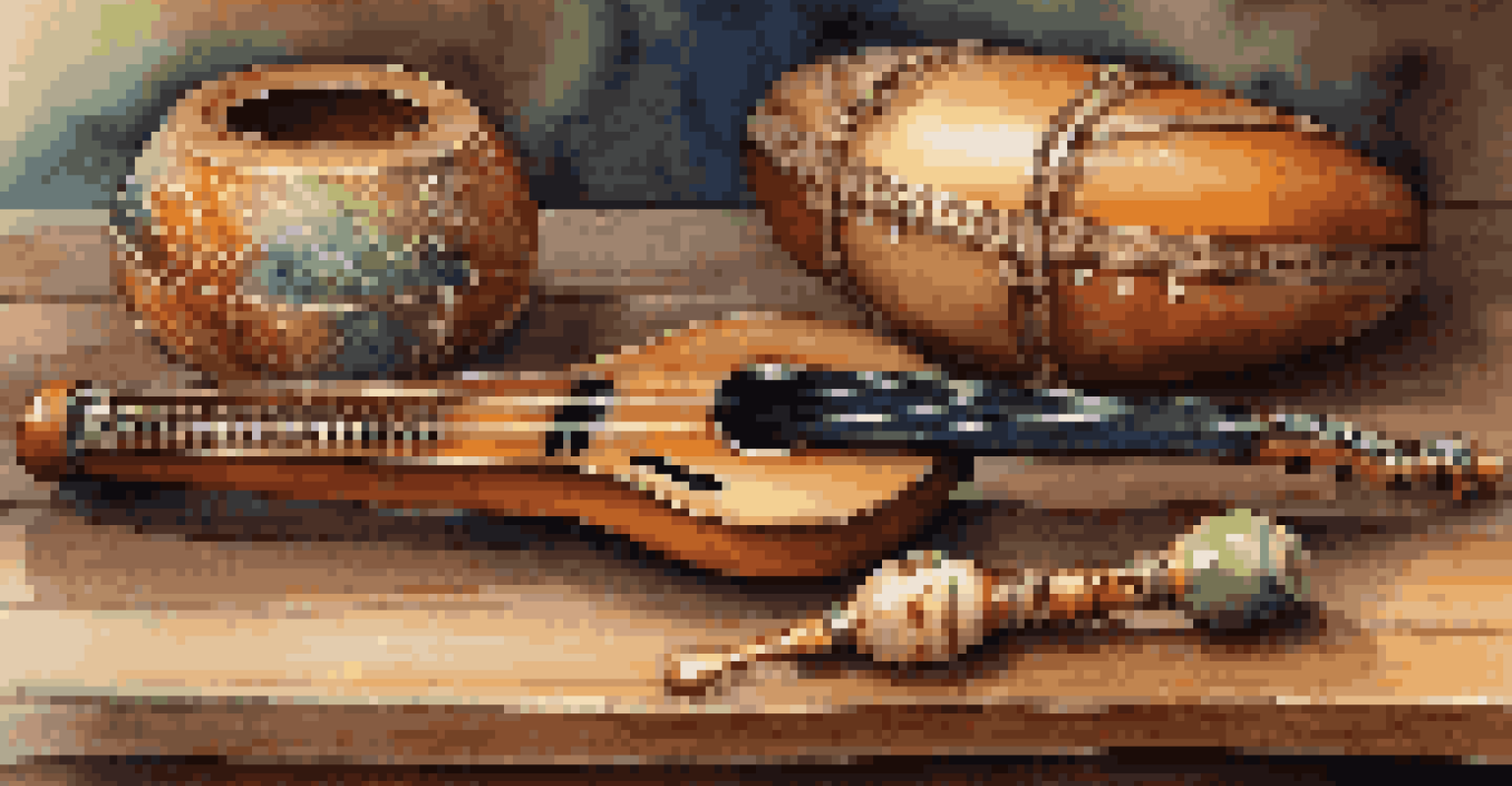The Role of Music in Preserving Language and Dialect Diversity

Understanding Language and Dialect Diversity
Language and dialects are more than just communication tools; they represent cultural identity and heritage. Each language carries unique expressions and nuances that reflect the history and values of its speakers. Dialects, on the other hand, showcase regional variations, making communication rich and diverse. However, many languages and dialects face the threat of extinction due to globalization and cultural homogenization.
Language is the road map of a culture. It tells you where its people come from and where they are going.
As communities become more connected, smaller languages often get overshadowed by dominant ones. This loss is not just linguistic; it erases stories, traditions, and knowledge that have been passed down through generations. The urgency to preserve these languages is evident, and music emerges as a powerful ally in this endeavor.
By understanding the importance of language and dialect diversity, we can appreciate why preserving them is vital for cultural sustainability. When we listen to music in various languages, we engage with these cultures and foster a deeper appreciation for their uniqueness.
Music as a Cultural Expression
Music is a universal language, transcending barriers and connecting people across cultures. It allows for the expression of emotions, stories, and cultural practices in a way that words alone sometimes cannot. Through melodies, rhythms, and lyrics, music captures the essence of a community’s identity and traditions.

For example, traditional folk songs often tell the stories of a people’s lineage, struggles, and triumphs. When sung in their native languages, these songs become vessels for preserving the linguistic nuances that define them. In this way, music not only entertains but also serves as a living archive of cultural history.
Preserving Language Through Music
Music serves as a powerful tool for preserving languages and dialects by fostering cultural identity and heritage.
By embracing music as a cultural expression, we foster environments where languages can thrive. When communities celebrate their music, they simultaneously celebrate their languages, reinforcing their importance within the cultural fabric.
Musical Education and Language Learning
Integrating music into language education has proven to be an effective strategy for enhancing learning. Songs often incorporate repetitive structures and rhyme, making it easier for learners to remember vocabulary and grammar. This method appeals to multiple learning styles, engaging auditory, visual, and kinesthetic learners alike.
Music is the universal language of mankind.
For instance, children who learn songs in their native dialects not only enjoy the process but also internalize the language more naturally. This fun approach can lead to greater retention and understanding, ultimately helping to preserve the language. Moreover, music classes can create a supportive community where learners feel empowered to use their languages.
Incorporating music into language education fosters a sense of pride among learners, encouraging them to embrace their linguistic heritage. Such initiatives remind us that learning a language can be a joyful experience, enriching both individuals and communities.
The Role of Traditional Instruments
Traditional musical instruments play a significant role in preserving language and dialect diversity. Each instrument often has cultural significance and is tied to specific musical styles and regional identities. When these instruments are played, they evoke memories and stories that are deeply rooted in the language of the community.
For example, the didgeridoo in Australian Indigenous culture is not just an instrument; it’s a symbol of storytelling and spiritual connection. When musicians play traditional pieces, they’re also sharing the language and dialects associated with those songs. This relationship between music and instruments helps maintain the vibrancy of a culture’s linguistic heritage.
Education Enhances Language Learning
Integrating music into language education creates engaging learning experiences that help retain linguistic heritage.
By promoting the use of traditional instruments, communities can strengthen their ties to their language. As new generations learn to play these instruments, they also learn the stories and languages that accompany them, ensuring that cultural knowledge is passed down.
Globalization and Its Challenges
While globalization connects us in unprecedented ways, it poses significant challenges to language and dialect diversity. The dominance of global languages, particularly English, can overshadow local languages, leading to their decline. As people gravitate towards mainstream music, regional styles and languages may become less visible.
This phenomenon can create a cycle where younger generations feel less inclined to learn their native languages, viewing them as less relevant. However, music can be a counterbalance to this trend, serving as a reminder of the beauty and richness of local cultures. Artists worldwide are increasingly blending traditional sounds with contemporary genres, reigniting interest in diverse languages.
By recognizing these challenges, we can take proactive steps to promote musical diversity. Supporting local artists and music initiatives can create a thriving environment where languages and dialects are celebrated rather than diminished.
Case Studies: Successful Preservation Through Music
Several communities around the world showcase how music can successfully preserve language diversity. One notable example is the revival of Indigenous languages in North America through music. Artists often incorporate their native languages into contemporary songs, making them more accessible and appealing to younger audiences.
Another example is the 'Gaelic Revival' in Scotland, where musicians are embracing traditional Gaelic songs while infusing modern styles. This movement has sparked renewed interest in the Gaelic language, leading to educational initiatives and community engagement. Such case studies highlight the potential of music as a tool for cultural preservation.
Globalization Threatens Diversity
While globalization connects cultures, it poses significant risks to the survival of local languages and dialects.
By sharing these success stories, we inspire other communities to explore music as a means of preserving their languages. When we see the positive impact music can have, it encourages collective efforts toward language and dialect preservation.
The Future of Language Preservation Through Music
Looking ahead, the future of language preservation through music is promising but requires concerted efforts from various stakeholders. Governments, educators, and artists must collaborate to create platforms that promote linguistic diversity. This could include funding for music programs in schools that focus on local languages and dialects.
Moreover, technology can play a role in amplifying these efforts. Online platforms can facilitate the sharing of music in various languages, connecting artists and audiences worldwide. By harnessing digital tools, we can create a global community that values and promotes linguistic diversity.

Ultimately, the future lies in celebrating the intersection of music and language. By embracing this relationship, we can ensure that languages and dialects continue to thrive, enriching our global tapestry of culture.